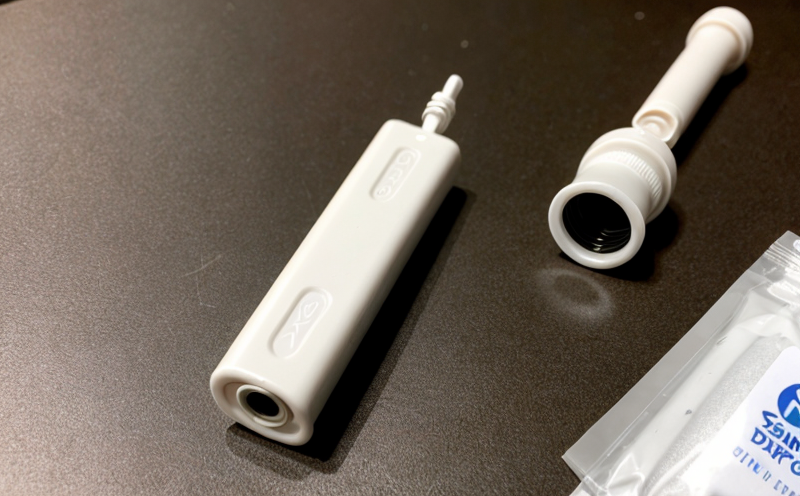ISO 7886 Disposable Syringe Dead Space Testing
The ISO 7886 standard is pivotal in ensuring the safety and efficacy of disposable syringes, especially in medical applications. Dead space within a syringe can lead to inconsistencies in dosage delivery, which could be critical in both therapeutic and diagnostic contexts. This service focuses on testing the dead space volume within disposable syringes using precise volumetric techniques that adhere strictly to ISO 7886 standards.
The primary goal of this testing is to ensure that the syringe does not retain more than a specified amount of liquid, thereby guaranteeing accurate medication delivery. Dead space volumes are critical in medical devices as they directly impact patient safety and compliance with regulatory requirements.
Accurate measurement of dead space involves filling the syringe with an appropriate fluid under controlled conditions and measuring the volume that remains after complete expulsion. This process requires high precision to ensure that the results reflect real-world usage scenarios accurately.
The testing procedure typically involves the following steps:
- Preparation of the syringe for testing, ensuring it is free from external contaminants and residues.
- Filling the syringe with a specified volume of fluid using calibrated equipment to ensure accuracy.
- Expulsion of the fluid through the needle orifice under controlled pressure conditions.
- Measurement of the residual fluid in the barrel, which represents the dead space volume.
Understanding the implications of dead space is crucial for medical device manufacturers and healthcare providers. Excessive dead space can lead to variability in dosing, potentially compromising patient outcomes. This testing ensures that syringes meet stringent regulatory requirements, enhancing trust in the product's reliability.
The ISO 7886 standard provides a framework for manufacturers to ensure compliance with international regulations regarding disposable syringe design and function. By adhering to these standards, manufacturers can mitigate risks associated with dead space and enhance patient safety.
Scope and Methodology
| Parameter | Description |
|---|---|
| Syringe Type | Inclusion of various sizes and types, including insulin pens, intravenous catheters, and subcutaneous injection devices. |
| Fluid Used | Pure water or saline solutions to simulate medical fluids without altering the test results. |
| Test Pressure | Standardized pressure applied during expulsion to ensure consistent results across different devices. |
| Measurement Precision | Utilization of high-precision volumetric flasks and analytical balances for accurate measurement. |
Why Choose This Test
- Ensure compliance with international standards, such as ISO 7886, ensuring product reliability and safety.
- Avoid the risk of regulatory non-compliance and potential legal issues associated with non-conformance to industry regulations.
- Guarantee accurate medication delivery by minimizing dead space within syringes, enhancing patient outcomes.
- Promote trust in your product among healthcare professionals and patients through rigorous testing protocols.
Quality and Reliability Assurance
- Our laboratory employs state-of-the-art equipment, calibrated to international standards for precise measurements.
- We adhere strictly to ISO guidelines, ensuring accurate and consistent results across multiple tests.
- Trained technicians with extensive experience in medical device testing ensure the reliability of each test conducted.





